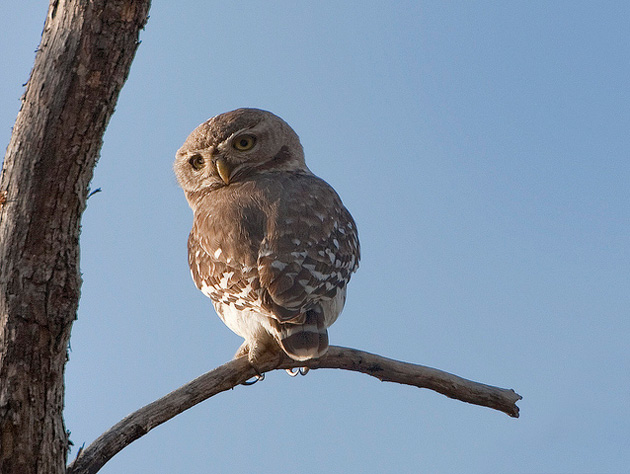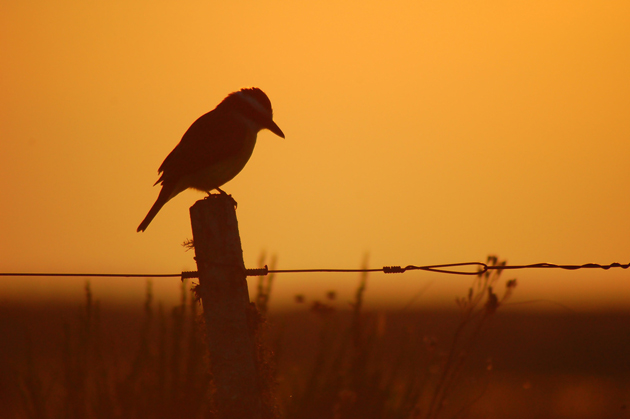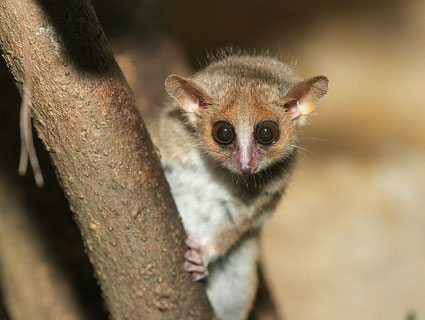
Do you miss the mammoth? Dream of dodos? Long for Lycaena dispar dispar? After centuries of driving species after species to extinction, we’re now tantalizingly close to bringing some of them back. Using advances in genetic sequencing and molecular biology, scientists across the world are mining extinct animal specimens for ancient DNA to try to resurrect disappeared species.
The science is complicated—National Geographic has a great rundown—and so are the ethics involved. But who can resist dreaming up a de-extinction “wish list”? With more species nearing the extinction danger zone every day?, there’s no shortage of candidates, but some are more scientifically suited for resurrection than others. And even if we could bring a species back, should we? We looked to scientists to explain who they’d like to bring back, and which are best left in the past.
T. rex, extinct for 65 million years
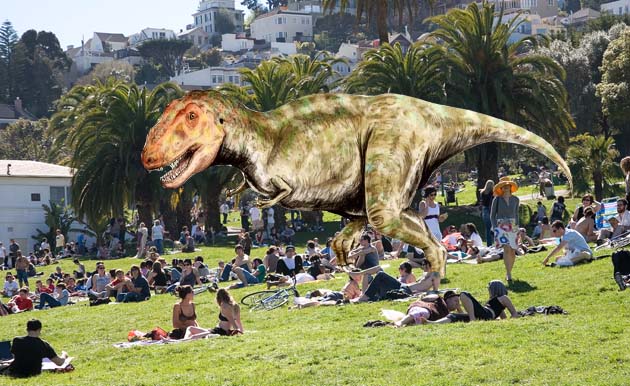
Designed for “maximum bone-crushing action,” Tyrannosaurus rex could down 500 pounds in a single bite. The first complete T. rex fossils, some the length of a school bus, were discovered in 1902 in Hell Creek, Montana, by legendary fossil hunter Barnum Brown, who employed dynamite and horses to dig up fossils all over North America. Given Rex’s place in the popular imagination, it’s somewhat surprising that only around 30 more specimens have been dug up since then.
Can we bring it back? As they say in bioscience, “You can’t clone from stone.” As Carl Zimmer explains in his excellent National Geographic piece on de-extinction, “In reality the only species we can hope to revive now are those that died within the past few tens of thousands of years and left behind remains that harbor intact cells or, at the very least, enough ancient DNA to reconstruct the creature’s genome.” T. rex and the rest of the dinos have been gone for at least 65 million years; it’s not gonna happen. In fact, nearly all of the species we could theoretically resurrect are ones we wiped out in our relatively recent rise to the top of the food chain. “This suggests another reason for bringing them back,” writes Zimmer. —Zaineb Mohammed
Passenger pigeon, extinct for 100 years

Said to have flown in massive, million-bird flocks that filled the North American sky, the humble passenger pigeon was considered one of the most social birds in North American history, but was wiped out in the early 20th century thanks to hunting and shrinking habitat. The last passenger pigeon, Martha, died in a Cincinnati zoo in 1914.
Can we bring it back? Referred to as the “poster-child for de-extinction,” the pigeon’s genome is already being sequenced by scientists like Ben Novak at the University of California-Santa Cruz. As National Geographic explains, passenger pigeon DNA could be swapped into corresponding bits of modern-day pigeon DNA—Novak’s eyeing the band-tailed variety, found in the western United States—to create passenger pigeon stem cells. Those cells are converted into germ cells, and inserted into modern pigeon eggs. When the eggs hatch, seemingly ho-hum modern pigeon babies will emerge, but they’d be laden with passenger pigeon germ cells. When this new generation mates, the theory goes, it’ll bring baby passenger pigeons to life.
Biologist David Ehrenfeld isn’t sure this is such a good idea. “Who’s going to mother the baby passenger pigeon?” he asks, noting that the band-tailed pigeon flies, mates, sings, and eats differently than the passenger pigeon. —Maddie Oatman
Saber-toothed tiger, extinct for ABOUT 10,000 years

The saber-toothed tiger was a compact killing machine, chasing small mammoths, giant sloths, and bison all over North America until about 10,000 years ago when it and many other species mysteriously died out at the end of the last Ice Age. Its genus name, smilodon, comprises the Greek words for “chisel” and “tooth,” though the modern lion’s bite is probably three times as strong as old smilodon‘s.
Can we bring it back? About 2,000 saber-toothed fossils have emerged from the La Brea tar pits in Southern California—it’s the state fossil—and, being around 10,000 years old, they likely contain recoverable DNA. But so far, no scientists have actually attempted to recreate it. —Maddie Oatman
Dodo, extinct for 332 years
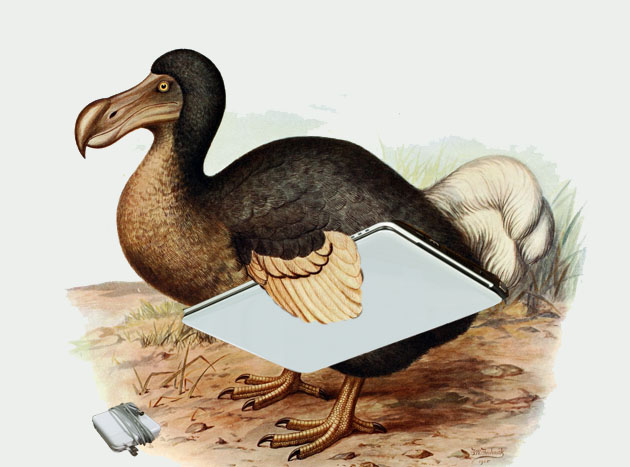
Dodos were once endemic to the forests of the beautiful, isolated island of Mauritius in the Indian Ocean. Historic accounts describe them as slow, awkward, and rather dumb—making for a convenient, if not particularly tasty, source of island protein. Dutch colonists gobbled up the last of them within 40 years of landing there in the 17th century.
Can we bring it back? Tropical paradises like Mauritius don’t make great fossil vaults, so a fully intact specimen hasn’t been recovered. Oxford geneticists have cobbled together some dodo DNA from a beak, but the bird’s ungainly proportions and slim genetic diversity (a result of its small population size) could make it hard to reproduce. —Tim McDonnell
Great auk, extinct for 170 years

Great auks were once the penguins of the Northern Hemisphere, fanning out from Canada to Scotland. But humans started hunting them in prehistoric times, and by the 17th century, auks only lived in a few areas—and were still a popular source of meat and oil to boot. Newfoundland tried to petition the English to stop hunting auks in 1775, but to no avail. The last great auks are believed to have been shot in Iceland in 1844.
Can we bring it back? “If I could get another project going, it would be the great auk,” says Stewart Brand, whose preservationist Long Now Foundation runs a de-extinction campaign called Revive and Restore. There are over 80 stuffed great auks in museums around the world that could help scientists sequence their DNA, too, but we couldn’t find any current efforts to de-extinct the species. —Maggie Severns
Pyrean ibex, extinct for 13 years

The Pyrean ibex, also called a bucardo, was a wild goat that grazed the mountains of Spain until just over a decade ago. Hunting thinned the population throughout the 20th century. By 1989, there were only a few dozen left. The last bucardo, a female named Celia, was tracked by wildlife veterinarians across Spanish national parks until she was killed under a falling tree in 2000.
Can we bring it back? In July 2003, scientists briefly de-extincted the Pyrean ibex by cloning Celia. Using frozen skin samples, they made 439 eggs with Celia’s DNA, and 57 of those nuclei developed into embryos inside surrogate mothers. Five survived the full term of pregnancy, and one was born. Unfortunately, the baby clone emerged with an extra, nonworking lung, leaving it unable to breathe properly. Minutes after birth, she died in the arms of one of the scientists who created her. —Maddie Oatman
giant ground sloth, extinct for 10,000 years
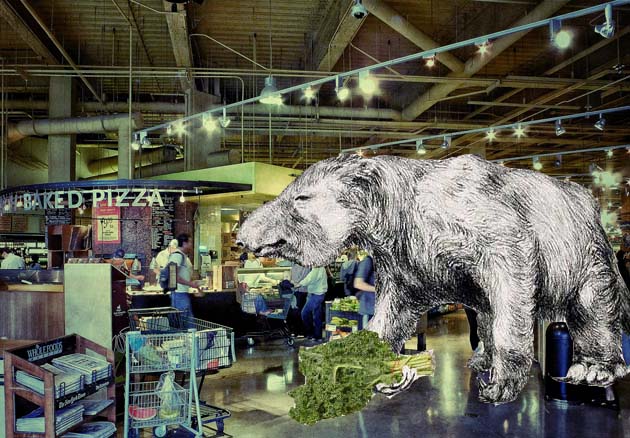
Giant sloths, which went extinct around the same time as saber-toothed cats and mastodons, probably had more in common with modern elephants than their cuddly counterparts today. These 20-foot behemoths weighed up to four tons and sported huge claws, says mammologist Ross MacPhee of the American Museum of Natural History in New York, where you can see one of the best collections of fossils from these behemoths that once roamed from the New World from Cape Horn to the Arctic circle.
Can we bring it back? MacPhee and his colleagues are at work piecing together the sloth’s DNA from pieces of skin fossilized in South America, but it’s slow-going. Moreover, modern sloths are too tiny to make good surrogate parents. In any case, says McPhee, it’s not clear what we would gain from bringing giant sloths back. There’s more potential ROI in bringing recently extinct sloths, like the cow-size Shasta ground sloth, which scatter endangered tree seeds as they munch their foliage. —Tim McDonnell
aurochs, extinct for 400 years

Fans of the 2012 movie Beasts of the Southern Wild will remember the mythological aurochs that returned from ancient days to chase after Hushpuppy. To recreate the giant creatures for the film, filmmakers wrapped Vietnamese potbelly pigs in nutria skins. These grandfathers of modern cattle became extinct in the 17th century due to hunting, disease, and habitat loss.
Can we bring it back? A European coalition of scientists known as Project Tauros plans to “backbreed” cattle species with traits similar to the aurochs, and hope to slowly reverse engineer the extinct beast. “It’s straightforward trait selection,” says Long Now Foundation’s Stewart Brand. “The traits of the aurochs are very well documented, so they’re going trait-by-trait back to it.” Researchers in Poland also plan to try to recreate an animal that has 99 percent gene compatibility with an auroch to examine exactly why the giant cattle went extinct. —Maddie Oatman
NEANDERTHALS, EXTINCT FOR 28,000 YEARS

Our closest human relative, Homo neanderthalensis was shorter and stockier than humans but had the same brain size, wore clothes, made art, and buried its dead. Some believe Neanderthals became extinct by breeding with humans until there were none left, while others have suggested that they had trouble competing with humans, whose more advanced social networks and group skills made for better survival in harsh environments.
Can we bring it back? Piecing together bits of Neanderthal DNA would be difficult, but Harvard geneticist George Church has another idea: tweak human DNA so it matches that of the Neanderthal. But there’s little popular demand in the scientific community for a Neanderthal comeback. “Too risky medically, both for the Homo sapiens mother and for the Homo neanderthalensis fetus,” says Stanford law professor and de-extinction ethicist Hank Greeley. “Part of me would love to see what they were like, but I don’t trust us to treat Neanderthals well.” —Maggie Severns
tasmanian tiger, extinct for About 70 years

Resembling a cross between a wolf and a tiger, the Tasmanian tiger was actually more closely related to the kangaroo or the koala. And unlike its cousin the Tasmanian devil, this tiger was shy and secretive, as well as generally mute. Believed to have preyed on sheep, thylacine was likely driven extinct by human hunting of the kangaroos, small rodents, and birds it hunted for food, as well as competition with the dingo. The last Tasmanian tiger died at a zoo in Hobart, Tasmania, but lives on digitally on video.
Can we bring it back? In 2008, researchers in Australia extracted DNA from four 100-year-old Tasmanian tiger samples and injected a copy into some mice. The technique led to some interesting biological findings about the long-extinct animal, but the DNA samples were revealed to be too degraded for full cloning. Researchers at Penn State University have also looked into extracting DNA from the tiger’s hair, but the absence of a closely matched surrogate still leaves cloning unlikely. —Zaineb Mohammed
Giant rodent, extinct for 2-4 million years

Thought to resemble a bull-sized guinea pig, scientists think this enormous rodent fought off saber-toothed cats with its massive teeth. Josephoartigasia mones was 10-feet-long nose-to-tail and thought to weigh up to a ton, based on a well-preserved skull discovered by an amateur paleontologist in Uruguay. Its modern cousin, the much smaller capybara, still lives in South America.
Can we bring it back? Unlikely. There aren’t many specimens to provide scientists with DNA and no existing giant hamsters to act as surrogate mothers to modern-day giant rodent babies. —Maggie Severns
haast’s eagle, extinct for 500 years

According to Maori legend, Haast’s eagles were known to make off with human children, but the nine-foot-long bird mostly fed on moa, large emus that could weigh 300 pounds. Moa were slowly driven to extinction when the Maori arrived in New Zealand around 1300 AD, and the Haast’s eagle wasn’t far behind.
Can we bring it back? Not without moa around to munch on, and currently there aren’t any projects devoted to de-extincting either species. —Maggie Severns
